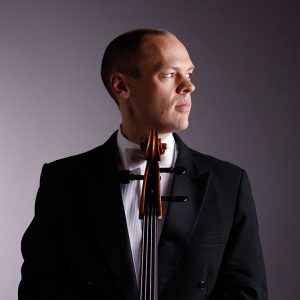
The Holy Sextet (Part 1)
Brant Taylor
Think back to when you were shown how to use the bow to successfully produce different sounds on the cello. In all likelihood, you learned that there is a trio of “variables” that are combined in certain ways to achieve a desired result:
WEIGHT, or how much of the right arm’s heft is placed into the string from above (I prefer the term “weight” to “pressure,” though they refer to the same idea).
SPEED, or how quickly the bow is moved laterally.
CONTACT POINT, or where the bow hair makes contact with the string relative to the bridge (or fingerboard).
While each of these variables is critically important to sound production, the complete recipe for successfully controlling the string with the bow involves more. There are at least three other basics related to addressing the string with the bow which can affect your sound positively or negatively. Two are comparatively minor, but one of them is so important—and so frequently overlooked—that it deserves a place equal to the three members of the “holy trinity” listed above.
Let’s start with that one.
BOW ANGLE, or whether you draw the bow completely parallel to the bridge (perpendicular to the string) from frog to tip.
Since our strings are fixed at the nut and the bridge, they vibrate best when bowed or plucked sideways relative to those fixed points. Try some pizzicati. The most resonant ones are those where your fingers simply move the strings sideways, not up and down, diagonally, or some variation of those. A great bow angle ensures the same thing: that you are always moving the strings only in the direction that results in the best resonance. An improper bow angle adds contrary forces that try to pull the string diagonally up or down. This directly counteracts the sideways vibrations that your strings prefer and adds undesirable grit to your tone.
Your right arm must adjust the angle of the bow for each string, particularly for the A and C strings. For those with arms of average length, this usually means a feeling of pushing the bow out away from the body as you approach the tip on the A string and a feeling of pulling back behind your waist as you approach the tip on the C string. Those with shorter arms may need to work harder for a good angle, especially on the A string. The mirror can be a great help in seeing and understanding bow angles at first—particularly the basic idea that bowing parallel to the bridge on each string often feels more different than you expect. Ultimately, playing with a great bow angle should become second nature. It doesn’t take much experimenting with proper and improper angles to see that even a modest deviation from parallel to the bridge can seriously compromise your control of the string.
The implications of bow angle go far beyond legato playing. Détaché and many off-the-string strokes are affected by your level of attention to bow angle. In spiccato, where the bow only makes contact with the string for a split second in each direction, you want that contact to be as high-quality as possible. Chords across three or four strings must begin and end with different angles—otherwise, either the top or bottom notes will not sound their best. I’ve seen many a student struggle to get the sounds they desire because they are completely unaware of the angle with which their bow addresses the string. Bow angle is not so much a variable as a simple fact: the best contact between bow and string is always from a perpendicular angle!
Next up in Part 2, the remaining two members of the sextet.
Subjects: Practicing, Technique
Tags: bow speed, bow technique, Brant, bridge, cello, cellobello, contact point, control, pressure, relaxation, struggle, Taylor, tone, variables, variation, Vibrations, weight
